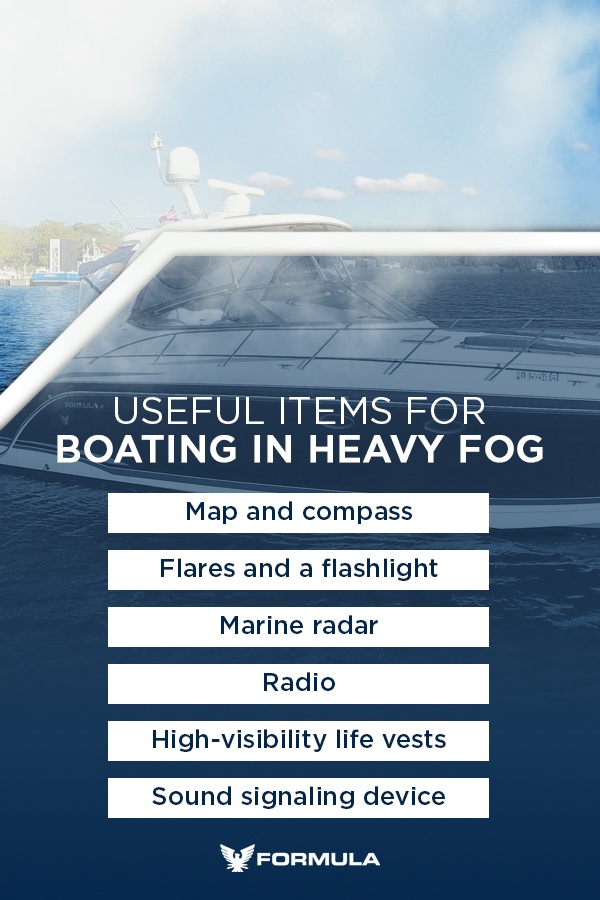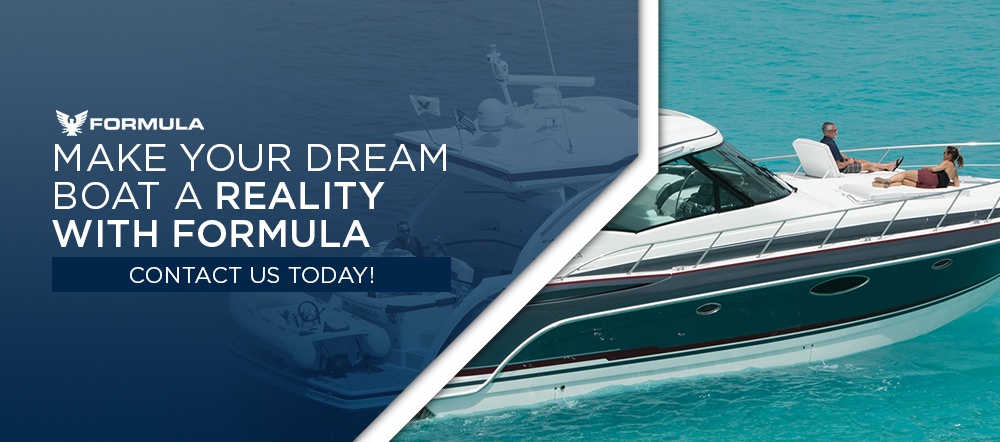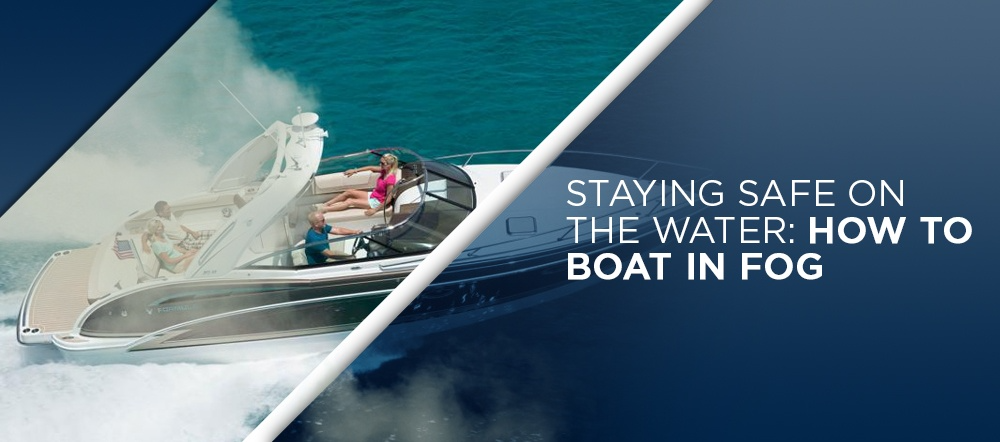
According to a 2018 report released by the U.S. Coast Guard, collision with other recreational vessels and stationary objects are the top two causes of boating-related accidents in the United States. Often, the reason for these collisions is reduced visibility. Several things can cause reduced visibility, including sudden, unexpected fog cover. Although common, boating into dense fog requires preparation, vigilance and a plan. This article covers the hazard of operating in restricted visibility, as well as some helpful tips for fog safety.
The Importance of Being Prepared for Fog While Boating
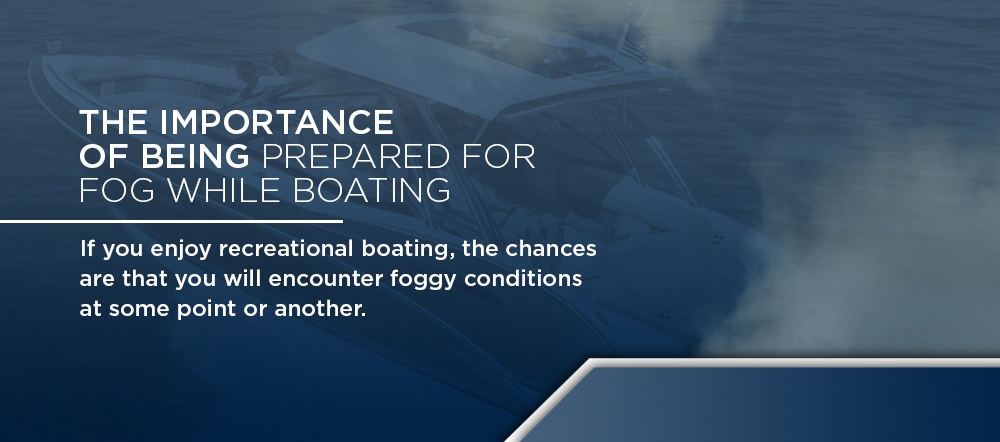 If you enjoy recreational boating, the chances are that you will encounter foggy conditions at some point or another. While you can take several steps for safe boating in sudden fog, preparing your vessel and passengers ahead of time is the best way to handle reduced visibility.
If you enjoy recreational boating, the chances are that you will encounter foggy conditions at some point or another. While you can take several steps for safe boating in sudden fog, preparing your vessel and passengers ahead of time is the best way to handle reduced visibility.
THE DANGERS OF FOG
Heavy fog makes it nearly impossible to see your surroundings, which increases the likelihood of a collision or getting lost.
- Collisions: One of the biggest dangers of fog is the threat of colliding with another vessel, which is why the U.S. Coast Guard has guidelines for sounding location signals during periods of low visibility. Other boats aren’t the only thing you can collide with, however. Be on your guard for natural and foreign obstacles, including buoys, rocks, sandbars and the shoreline.
- Getting lost: Even if you know the body of water well, fog is very disorienting. Getting lost can happen before you even realize you’ve veered off course. For this reason, it is crucial that you immediately slow down and fix your location. Never rely on GPS alone.
USEFUL ITEMS FOR BOATING IN HEAVY FOG
Any level of fog can be hazardous if you’re not prepared. Even if the weather shows no indication of fog cover, consider stocking your boat with the following items, just in case:
Map and compass: A boat with built-in GPS navigation is very useful, but you should avoid relying on technology alone. Keep a paper map and a compass on board so you can guide yourself back on course if you get lost during unexpected fog — especially if you’re boating in unfamiliar waters.
Flares and a flashlight: Both flares and a heavy-duty flashlight can help you signal your location to other oncoming vessels in dense fog.
Marine radar: A marine radar can help you avoid a collision, but remember, they may not detect every vessel, including small boats or kayaks. For additional protection, use a marine radar and a depth reader to watch for other route obstructions.
Radio: You can use your radio to listen to weather and fog alerts, communicate with your destination point or make noise while alerting other vessels of your location.
High-visibility life vests: Every boat should be stocked with enough lifejackets for every member on board. Look for vests that offer additional protection, such as lights or reflective strips, to promote visibility if someone falls into the water during heavy fog. Keep all life vests stored in a safe, easily accessible place when not in use.
Sound signaling device: Sound signaling devices are one of the most important tools to have on board, especially during periods of heavy fog and reduced visibility. The three main types of sound signaling devices are air horns, whistles, and ship bells. Air horns are ideal for portability and emitting loud, easily recognizable sounds. Always have more than one air horn on board, just in case the fog lasts longer than anticipated, and you need to continue signaling your location for other boaters. Whistles are great for wearing around your neck and can be very useful for finding someone in a man overboard situation. Finally, larger vessels often have a built-in ship bell that can be used to signal your location, as well as communicate with other vessels on the water.
HAVE AN EMERGENCY FOG PLAN IN PLACE
It’s a good idea to have an emergency plan in place before any boat trip. A plan can help you prepare for hazardous situations and offer all passengers peace of mind. Here are some things to consider when establishing your own emergency fog plan:
- Assign each passenger a role to fill in the event of unexpected fog cover. For example, you can assign someone to watch the back end of the boat, someone to prepare the air horn and someone to monitor the radar.
- Review where passengers can find their life vests and how to wear them, as well as procedures regarding the safest way to handle a man overboard situation.
- Make sure all of your passengers understand the importance of remaining calm and quiet during unexpected fog. Empowering friends and family with this knowledge will help ease any tension or uncertainty during a time when staying focused is crucial.
- Avoid boating while under the influence of alcohol, so if an emergency arises, you are equipped to handle it.
By putting these tips for boating in fog into practice, you and your passengers are less likely to feel unprepared or uneasy about reduced visibility.
How to Know If It Might Get Foggy
Always check the weather forecast for fog advisories before you head out for a day on the water. Fog is likely when one or more of the following conditions are present:
- When a rainshower is followed by a period of low-wind and clear skies.
- When overnight skies are clear, allowing surface temperatures to cool more quickly.
- When wind movement occurs from the direction of the water, gathering moisture.
- When warm, moist air blows over a body of cold water.
There are several different types of fog, but the two most likely to affect your time on the boat are advection fog and radiation fog. Advection fog — also known as sea fog or lake fog — is fog caused by moist air moving over a cool surface and is common over bodies of water. Radiation fog is the dense fog that often rolls in overnight and usually begins on land before moving over bodies of calm water.
What to Do If You Get Caught in Fog
Sometimes, fog can roll in without any indication in the weather forecast. When this happens, the most important thing to do is to stay calm and vigilant, while following these steps:
- Take your bearings and mark your location on a chart or electronic plotter.
- Slow your speed down as slow as you can without coming to a complete stop. Continue to log your course and speed.
- Turn on your navigation lights and prepare your emergency gear, such as reflective life vests and air horns.
- If you are boating with others, assign people to act as lookouts on all sides of your vessel.
HOW DO YOU NAVIGATE A BOAT IN FOG?
Navigating a boat in reduced visibility requires a significant level of care and attention. “Reduced visibility” or “restricted visibility” refers to any condition in which you have difficulty seeing due to fog, mist, inclement weather or other similar causes. Typically, fog is considered “dense fog” if you can see one or fewer nautical miles away.
The internationally recognized standards for reduced visibility on the water are:
- Very Poor: If you can see less than a one-half nautical mile away, visibility is considered very poor.
- Poor: If you can see between one-half and 2 nautical miles away, visibility is considered poor.
- Moderate: If you can see between 2 and 5 nautical miles away, visibility is considered moderate.
- Good: If you can see 5 or more nautical miles away, visibility is considered good.
The U.S. Coast Guard requires that all vessels 65.5 feet or less follow certain lighting requirements for both power and sail-driven boats in these situations. Follow these tips for operating in restricted visibility:
- Listen carefully: Listen carefully to your surroundings for any audible signs of oncoming vessels, including boat engines, air horns and whistles.
- Make noise: Make enough noise so other vessels can hear you through the fog. During periods of heavy fog, you are required to make five-second blasts with an air horn or whistle every minute. Making noise can also help you better assess your location if you listen to the signal’s echo. In the next section, we’ll dive deeper into the signals and warning sounds for boating in fog.
- Stop when necessary: As a general rule, you should avoid anchoring your boat in dense fog to prevent becoming a stationary obstacle for other vessels. However, should conditions become unsafe to travel, it’s better to anchor and wait it out. Should you need to stop, never do so at the mouth of an inlet. Follow all signal guidelines for sounding your anchored location.
- Keep your eyes moving: Because it can be very disorienting, avoid staring directly into the fog for too long. Instead, keep your eyes moving. Scan around the entire boat, and regularly check on your passengers.
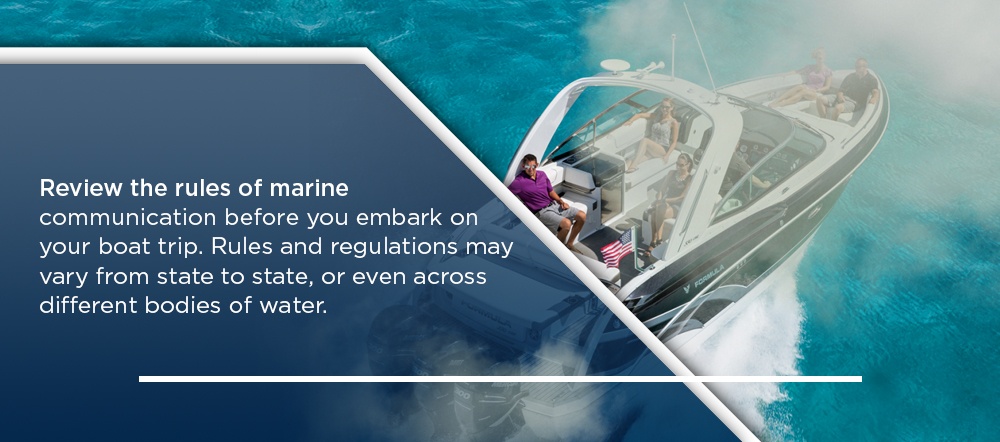
SOUNDS AND SIGNALS FOR NAVIGATING IN THE FOG
We’ve reviewed how important it is to make your vessel’s location known, and to listen carefully for signs of nearby obstacles — but what signals should you be listening for? There are two different types of sound blasts to be aware of: short blasts and prolonged blasts. Short sound blasts last about one second, while prolonged blasts last between four and six seconds.
Review the rules of marine communication before you embark on your boat trip. Rules and regulations may vary from state to state, or even across different bodies of water. Additionally, when boating on unfamiliar waters, it’s always a good idea to ask those familiar if there are any natural formations you should be aware of, such as islands or sandbars. Many boaters find it helpful to keep a copy of the various signals and their meanings on board, so they are easily accessible if needed.
Some common sounds to listen for include:
- One short blast: A single, short blast likely indicates that the vessel intends to pass you on their port — or left — side.
- Two short blasts: Two short blasts made in succession mean the vessel intends to pass you on their starboard — or right — side.
- Three short blasts: Three short blasts indicate the vessel is using “astern propulsion,” which could mean they are backing up and need the area to remain clear.
When operating in restricted visibility, such as in the fog, pay close attention to the location of the blasts, as well as their duration. Use these guidelines for communicating with fellow boaters in the fog:
- One prolonged blast: If you hear a single, prolonged blast that lasts no more than two minutes, this indicates there is a power-operated vessel underway nearby. They could be alerting you of their presence or signaling a nearby hazard. Proceed cautiously.
- One prolonged blast plus two short blasts: A single, prolonged blast followed by two short blasts lasting no more than two minutes means a sailboat is underway nearby.
- Two prolonged blasts: Power-operated boats use two prolonged blasts every two minutes to indicate they are underway nearby, but not moving.
- Five or more short, rapid blasts: Five or more short, rapid blasts mean danger is near, or that a vessel has taken issue with you or another vessel’s intentions.
When sounding your own blasts, never sound a single blast for too long. This way, every vessel has a chance to be heard, and collisions are more easily avoided. If you have to anchor or have run aground, it’s crucial that you continue to make your location known using the following signals:
- Anchored: If you are anchored, make sounds in five-second increments, every 60 seconds, until you are once again underway.
- Run aground: If your vessel has run aground, sound three blasts or bell strokes, followed by five seconds of rapid bell ringing or horn blasting, followed by an additional three strokes or blasts every minute.
About Formula Boats and Our Navigation Systems
Formula Boats specializes in producing beautiful, comfortable vessels that go above and beyond your performance expectations. We understand that a boat is an investment — so you should be able to choose a boat that fits your unique wants and needs. That’s where the FormulaFlex Program comes in.
Our FormulaFlex Program allows you to custom choose different aspects of your boat’s design, including:
- The hull and outboard: With FormulaFlex MyWay™, choose between a virtually limitless number of high-quality graphic and color combinations for the hull and outboard of your vessel.
- Upholstery and cabin interior: Choose the color of your accent piping and have full control over the pattern of your upholstery, drapery and cushions. Whether your tastes are modern and chic or classic and coastal, we’ve got something for you.
- Electronics and helm layout: Customize your dash panel gauges and electronics layout to suit your preferences, including special upgrades. Our experts will work with you to create the optimal setup.
- Optional features: As you build your ideal Formula boat, you have the option to add features designed to enhance your boating experience, like a built-in Raymarine Axiom™ GPS. Specific Raymarine Axiom navigation systems vary, depending on which boat model you are customizing.
Make Your Dream Boat a Reality With Formula
Explore our website to learn more about our vessels or custom building process. You can also request a free catalog, which includes information about Formula dealers near you.

